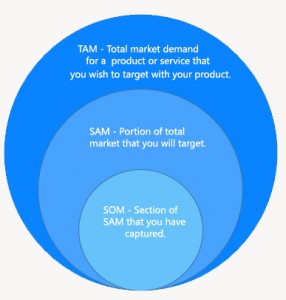Launching a new product? Make sure you’re doing it right!
July 29, 2016 written by Vinodh K

Have you got a cool new idea for a product, service or website? Are you gearing up to start developing it at the earliest and release it into the world?
Jumping straight into the execution without first validating your product or service’s concept may prove to be a challenge in terms of time, money and effort in the long-run.
It is always a good exercise for any Entrepreneur or Product Team as a whole to have some pre-launch research efforts. This not only prevents chaos during the planning phases, but also ensures that the product is something that people actually want and will use.
Let’s take a look at some of the questions that might be useful to stabilise your concept!
1.Does your product or service solve an existing problem?

Successful products provide users with solutions they need. Most successful entrepreneurs or product teams take a problem and conduct brainstorming sessions on how best to solve it. You can do this by identifying a problem that has no solution or at times have no stabilised solvable technique, and then build something that serves as a proper solution to that problem.
If you can solve someone’s pain point through your service, your product will add best value to the user’s life, thus building rapport between your company and the user.
2. Would you use it?

One of the greatest tests for endorsing your concept is to put yourself in the shoes of your target audience. Ask yourself, honestly, if the thing you are building is something you would personally use if you shared your target audience’s concerns.
In today’s technological landscape, it is important to build something that is customer-friendly, to build and maintain customer engagement. If you understand the end user or the present market well, the road to building a successful product and business becomes considerably easier.
3. Does the product account for other user views?

This is the next big question to be answered.
One way to find out is to build a simple online survey and send it to your existing customer base.
Another, is to create and feature a poll or survey on your website for willing participants.
Frame a set of questions designed to uncover the usage patterns your product might be put through.
If you want to target a specific demographic, you can make use of a service called Survata. It is a paid resource through which you can get a lot of feedback from the targeted user segments.
4. Does your concept add value to the market?

You may have an abstract idea that may solve critical problems and users may love it.
But, what if variations of your solution already exist out there in the market?
Don’t let that discourage you! If your great idea already exists, it doesn’t necessarily mean you won’t be successful, it just mean your target market already exists!
Your next objective is to figure out what makes your product an elegant solution for users. Outline the key differentiators and showcase these features to your target audience.
5. Segment your market
Whether you’re a startup or running an established business, you should be aware of the total potential revenue opportunities for your products.
TAM – Total Available or Addressable Market
This includes everyone you wish to target with your product. For example in a student financial aid agency, the TAM of the market would be all college students and all graduate students.
SAM – Segmented Addressable Market
This is the portion of your TAM that you will target. Using the example above, not every student is eligible for financial aid nor does every student need one. There is a percentage of the market that is eligible and has a need for our product or service. This portion of market which is targetable is your SAM
SOM – Serviceable Obtainable Market
This is basically a subset of your SAM that you will realistically reach.
Again, using the above example, number of eligible students enrolled for a financial aid per month or year would be your SOM.

Hopefully, this checklist has given you an insight into how to get started on the planning and launch of your product!
However, this is by no means a comprehensive account. Please use this as a guide to get started on the path to your product’s success!



